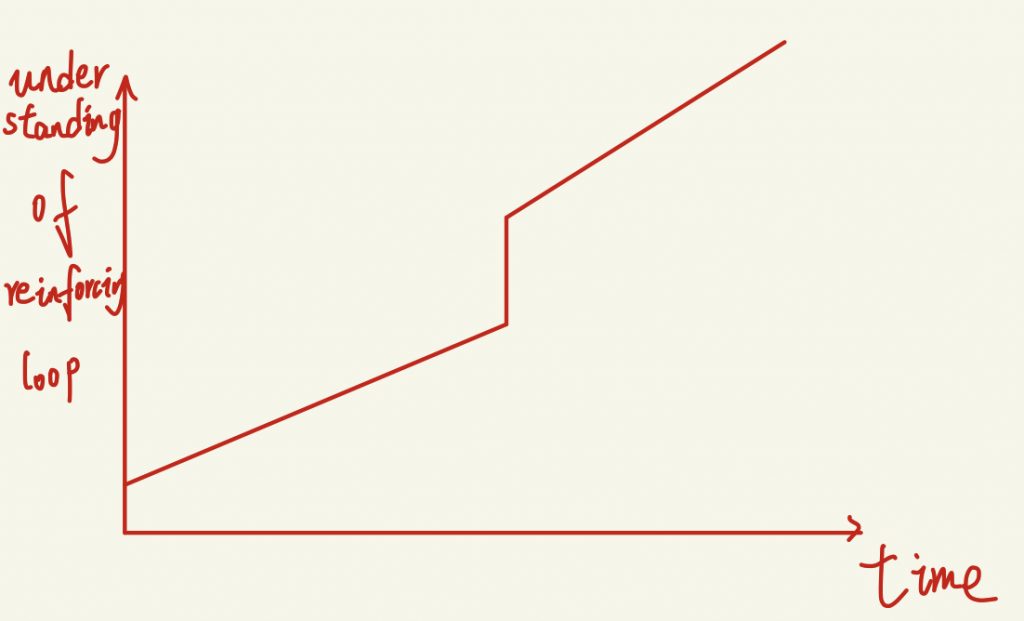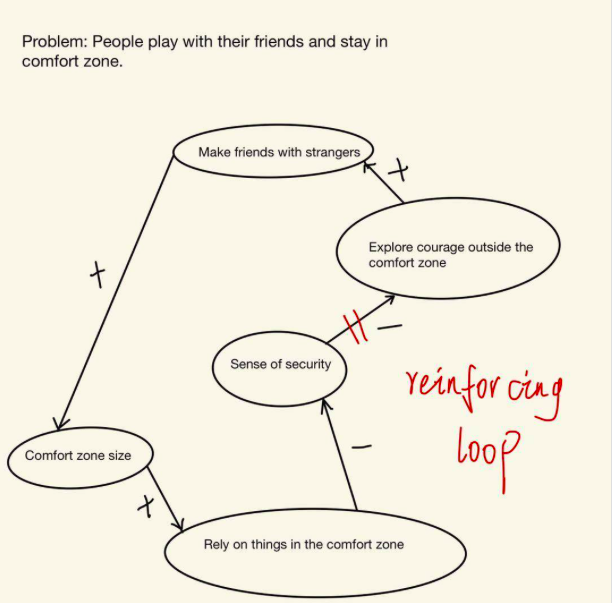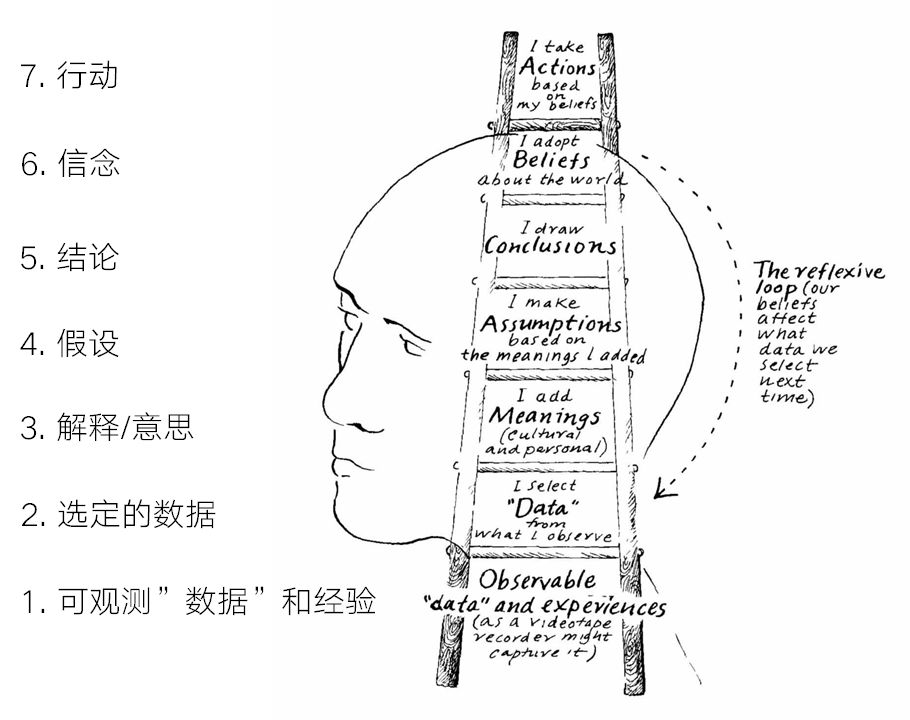Do you always make new friends with strangers?
Do you always play with your old friends?
As long as you see these two choices, the first one means you are brave to get out of your comfort zone, and the second one is not. I think most of the people’s choice is the second one. So In this unit, my problem is—- people play with their friends and stay in the comfort zone.

At the beginning of this unit, I created my problem and made the desired result. My problem is “People always play with their friends and stay in their comfort zone”. Do you see any wrong with this problem?
It is the word– always. After I submit it, Jonathan asks me why I use “always”, and he told me it is wrong! I thought this wrong is lucky, it helps me know we can’t use some words like always, don’t.
Then I did many tasks about my problem, I found this problem’s factors,Ladder of Inference,interview of problem, CLD and find my problem’s leverage points. This experience is really useful. Although these tasks are difficult, they improve my understanding to improve my problem.
This Casual Loop Diagram is from task 5, I think the most important factor is the sense of security and the delay. The delay is between a sense of security and explores courage outside the comfort zone. It is the most important factor that leads to this CLD. The explore courage outside the comfort zone will delay by the time, and time is this CLD’s basic.

This graph was from an interview with Brown In this interview, our main idea is about teamwork , because these days I didn’t feel good with my teamwork( someone pays much energy on it, however, some people always depend). Actually teamwork also has a connection with their comfort zone, you can see someone can have really good enthusiasm with his friends but when he teamwork with strangers or somebody he doesn’t like, he will always his responsibility.
In this Behavior-over-Time graph, my Y-axis is the experience of teamwork, and X-axis is time(week). It means as the time of teamwork increases, the experience of teamwork will gradually increase. Then they will have a better and better teamwork environment and will have a better relationship with each team member.

The Y-axis means an understanding of reinforcing loop, and X-axis means time. The first ascent means you know the most knowledge of reinforcing loop, then you will have some personal understanding of reinforcing loop like you can complement the reinforcing loop with a balancing loop. After these two parts, you will use your understanding and knowledge to solve problems and get more and more understanding about it.

Actually, I also get some new understanding of my problem. When I just begin learn this unit, I didn’t really know how to solve it, I just thought can I use some saying to let people know “Get Out to Comfort Zone’s importance?”, but I know it is impossible to solve it. Then we learned Ladder of Inference. First, we use our understanding to explain 12 laverage points. At that time, I don’t really understand them, so that I can hardly use them to thinking my problem.
After Jonathan and Chuck’s description of them, I feel I got a better connection with these 12 leverage points, and I know which leverage point is important to my problem. Then, I focused on “reinforcing loop”, I found if one people always stay in the comfort zone, his dependence on the comfort zone will expand endlessly, so I use “reinforcing loop” to be the most important leverage point of my problem, and in my reinforcing loop, I found the most important factor— a sense of security and the delay.

This Casual Loop Diagram is from task 5, I think the most important factor is the sense of security and the delay. The delay is between a sense of security and explores courage outside the comfort zone. It is the most important factor that leads to this CLD. The explore courage outside the comfort zone will delay by the time, and time is this CLD’s basic.
Because I think Reinforcing Loop is my problem’s most important leverage point, I want to make an explanation. This reinforcing loop means a negative state. If we follow this reinforcing loop, we will more and more dependent on our comfort zone and never get out, so I want to change this negative reinforcing loop to a positive balancing loop. I want to increase the sense of security, then this loop will become a balancing loop, and our dependence on others will gradually decrease and our comfort zone size will also gradually get bigger.

I think I learn a lot from this unit, I get a deeper understanding and new methods to solve the problem. Although I still think my problem is really difficult and hard to solve, I still come up with some methods that I think can work on this problem. I thought System Thinking is really useful after learning it, I get multiple thinking to analyze a problem, and can find out the problems under the iceberg.